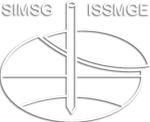The TC217 Workshop on Land Reclamation Technologies took place in the room Hall E3 at COEX North Tower on Sep. 21, 2017 at the occasion of the 19th International Conference on Soil Mechanics and Geotechnical Engineering (19th-ICSMGE) in Seoul, Korea.
9:00-10:30:
Methods for land reclamation using soft fill materials
Jian Chu (Nanyang Technological University, Singapore)
Summary/ Slides
Cement stabilization in cement treated clayey soils considering clay types, sand impurities and curing temperature
Siau Chen Chian (National University of Singapore)
Summary/ Slides
Soil improvement for hydraulic fill super-soft foundation by using vacuum preloading
Hanlong Liu (Chongqing University, China)
Summary/ Slides
Combination of vacuum preloading and lime treatment for improvement of dredged fill
Yuanqiang Cai (Zhejiang University, China)
Summary/ Slides
Geomorphodynamic stability of lands in interdital zones
Shinji Sassa (Port and Airport Research Institute, National Institute of Maritime, Port and Aviation Technology, Japan)
Summary/ Slides
Pearl Jumeira project: a case study of land reclamation in Dubai, UAE
Marwan Alzaylaie (Dubai Creative Cluster Authority - Government of Dubai, UAE)
Summary/ Slides
Comparison of ground conditions between Kansai International Airport and Tokyo Haneda Airport
Yoichi Watabe (Hokkaido University, Japan)
Summary/ Slides
At the beginning of this workshop, TC chair Watabe explained the context of the TC217 on Land Reclamation Technologies, which comprise of two issues, namely geotechnical issues and geoenvironmental issues. He then conveyed that of seven speakers scheduled for the workshop, one speaker Alzaylaie from Dubai could not come due to visa problem and instead his material would be presented by Watabe on behalf of Alzaylaie. The brief contents of a total of seven presentations made can be summarized as follows. Details of those presentations are available through the links above.
- Jian Chu, Vice-Chair of TC217, presented advanced technologies for land reclamation using soft fill materials. In view of the difficulties involved in using conventional vertical drains and vacuum preloading methods for soft or slurry materials, he stressed the advantage of the use of horizontal drains. The advantages include that vacuum pressures can be applied layer by layer and no sand fill is required, saving time and more reliable settlement prediction can be made. A method using the drainage enhanced geotextile sheet is proposed. [Slides]
- Darren SC Chian presented cement stabilization in clayey soils considering clay types, sand impurities and curing temperature. Effects of sand impurities and curing temperature in cement treated clay were studied. He then proposed a strength model incorporating both effects which were shown to produce good estimates of strength development over a wide range of water/cement ratio, soil/cement ratio and curing time for different clays and cement types. [Slides]
- Wengang Zhang on behalf of Hanlong Liu presented ground improvement for ultra-soft hydraulic fill using a new combined method of electro-osmosis, vacuum and surcharge preloading. In light of an urgent need to develop a fast, efficient and economical method to treat large areas of hydraulic fill ground, he proposed a combined method of electro-osmosis and vacuum surcharge preloading. The effectiveness of the new combined method with its applicability has been validated through field tests. [Slides]
- Yuan-qiang Cai presented combination of vacuum preloading and lime treatment for improvement of dredged fill. In view of the technical problems of conventional vacuum preloading method, he proposed a floc-vacuum preloading technique by adding hydrated lime to dredged clay slurry. The proposed floc-vacuum preloading technique has been experimentally shown to outperform the conventional vacuum preloading method regarding pressure transfer/dissipation, settlement and vane shear strength. [Slides]
- Shinji Sassa, Secretary of TC217, presented geomorphodynamic stability of lands in intertidal zones. He introduced that persistent sandbars, which play important roles in coastal land stability and habitats, manifest due to the interplay between the effects of suction dynamics, sediment transport and morphology. This new principle on morphodynamic stability was successfully applied to artificially created sandbars in Tokyo Bay, yielding a novel framework for achieving both biodiversity and stability of lands in intertidal zones. [Slides]
- Yoichi Watabe presented the content of Marwan Alzaylaie on behalf him: Pearl Jumeira Project- a case study of land reclamation in Dubai, UAE. He introduced the Dubai Overview that consists of Palm Jebel Ali, Palm Jumeira, The World Islands, Jumeira Bay Island, Deira Island, and Pearl Jumeira. Their geotechnical soil properties, project construction sequences and improvement work involving dredging and reclamation, rock revetment and ground improvement were summarized. Vibro-compaction and vibro-roller compaction were used. [Slides]
- Yoichi Watabe presented comparison of ground conditions between Kansai International Airport (KIX) and Tokyo Haneda Airport (HND). The KIX 1st phase was inaugurated in 1994, overcoming the consolidation settlements of the order of 15m, and the HND offshore expansion project on the ultra-soft clay started in 1984 and the further expansion project with a hybrid island consisting of piled-pier and land reclamation ended in 2010. A chart comparing the ground conditions of both airports was presented and summarized. [Slides]
After each presentation, concise yet active discussions were made between presenters and the participants from the floor. Finally, the ongoing and future activities of TC217 involving a series of symposiums/workshops in 15-ARC (2015), 19-SEAGC (2016), 19-ICSMGE (2017), ICGI 2017 (2017) and GeoSS10 (2017), were announced by the TC chair, in addition to the kind invitation of new members to join TC217. The current members of TC217 comprise of sixteen members from a total of ten countries. An honor lecture for TC217 is also scheduled to take place in the near future.
